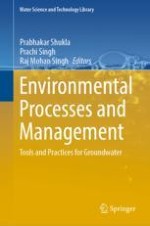2023 | OriginalPaper | Buchkapitel
9. Exploring the Sustainable Water Management and Human Well Being Nexus in Indian Context
verfasst von : Y. Shiva Shankar, Nitin Samaiya, Devendra Mohan
Erschienen in: Environmental Processes and Management
Aktivieren Sie unsere intelligente Suche, um passende Fachinhalte oder Patente zu finden.
Wählen Sie Textabschnitte aus um mit Künstlicher Intelligenz passenden Patente zu finden. powered by
Markieren Sie Textabschnitte, um KI-gestützt weitere passende Inhalte zu finden. powered by
